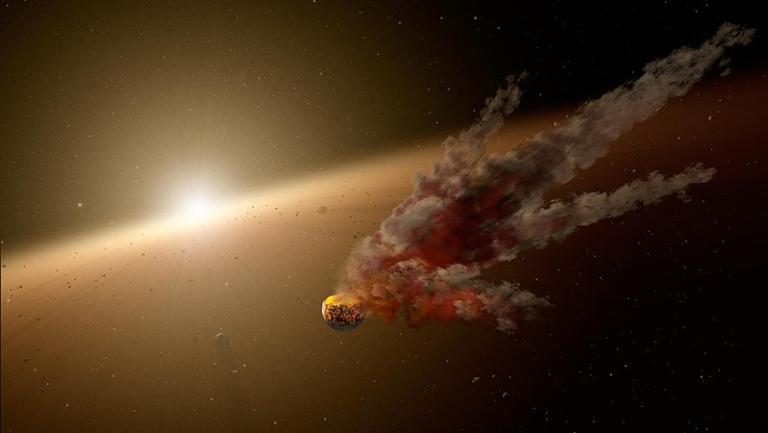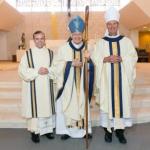
(This NASA artist’s conception is in the public domain)
Since, I’m told, I’m a young-Earth creationist who hates and fears science, I’m afraid that I don’t know exactly what to do with this interesting article:
“Meteorites brought water to Earth during the first two million years”
Perhaps I need to regard those as the first two million years of Earth’s six-thousand-year existence?
In any case, now that we’ve raised the issue of meteorites coming to Earth, this question follows pretty naturally:
“What Danger Do Small Asteroids Pose?”
I now offer you the caption that accompanies the NASA public domain image above:
Planets, including those like our own Earth, form from epic collisions between asteroids and even bigger bodies, called proto-planets. Sometimes the colliding bodies are ground to dust, and sometimes they stick together to ultimately form larger, mature planets.
This artist’s conception shows one such smash-up, the evidence for which was collected by NASA’s Spitzer Space Telescope. Spitzer’s infrared vision detected a huge eruption around the star NGC 2547-ID8 between August 2012 and 2013. Scientists think the dust was kicked up by a massive collision between two large asteroids. They say the smashup took place in the star’s “terrestrial zone,” the region around stars where rocky planets like Earth take shape.
NGC 2547-ID8 is a sun-like star located about 1,200 light-years from Earth in the constellation Vela. It is about 35 million years old, the same age our young sun was when its rocky planets were finally assembled via massive collisions — including the giant impact on proto-Earth that led to the formation of the moon. The recent impact witnessed by Spitzer may be a sign of similar terrestrial planet building. Near-real-time studies like these help astronomers understand how the chaotic process works.
NASA’s Jet Propulsion Laboratory, Pasadena, Calif., manages the Spitzer Space Telescope mission for NASA’s Science Mission Directorate, Washington. Science operations are conducted at the Spitzer Science Center at the California Institute of Technology in Pasadena. Spacecraft operations are based at Lockheed Martin Space Systems Company, Littleton, Colorado. Data are archived at the Infrared Science Archive housed at the Infrared Processing and Analysis Center at Caltech. Caltech manages JPL for NASA.
For more information about Spitzer, visit http://spitzer.caltech.edu and http://www.nasa.gov/spitzer.
***
Such topics suggest that “uniformitarianism,” at least as Hugh Nibley described it, may no longer be a fully viable scientific option:











